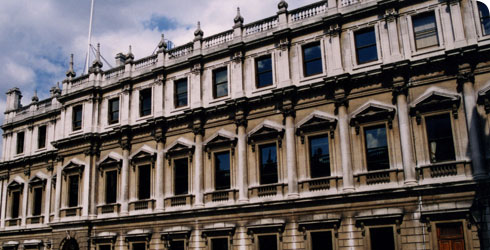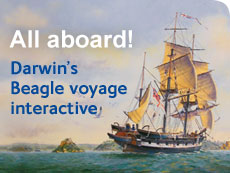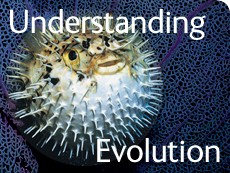London Societies linked to Darwin
After his return from the Beagle voyage, Darwin developed contacts with many eminent scientists and scientific societies based in London.
Geological Society of London
Darwin was an active member of the Society as he was elected a Fellow in 1836, became a Secretary in 1838, and Vice-President in 1843. He had regular interactions with Charles Lyell, whose book, Principles of Geology, Darwin had fervently studied while on the Beagle voyage using it as a basis for developing his ideas on the formation of coral reefs.
Hunterian Museum, Royal College of Surgeons

The Hunterian Museum at the Royal College of Surgeons © Royal College of Surgeons
After Darwin returned from the Beagle voyage, he needed to find people to identify the thousands of specimens he collected on his travels. In October 1836 he met Richard Owen, who was the new Hunterian Professor at the Royal College of Surgeons. Later that year he handed over his prized fossil mammals for Owen, a skilled anatomist, to identify. Owen’s assertion that the fossils belonged to extinct giant mammals of similar types to smaller living mammals in South America, provided Darwin with evidence of common ancestry.
Linnean Society of London
On 1 July 1858 Joseph Hooker and Charles Lyell read out Darwin’s and Alfred Russell Wallace’s papers on the tendency of species to form varieties and species by natural means of selection to a select group of scientists.
The timing was prompted by a letter Darwin received from Wallace a month before. Darwin was alarmed to find out that Wallace, who was collecting specimens in the Far East, had come up with almost the same theory as Darwin’s of evolution by natural selection. He was now forced to make his ideas public.
Hooker and Lyell arranged to read Wallace’s letter and extracts of Darwin’s unpublished manuscripts to the next meeting of the Linnean Society. Wallace was far away and Darwin’s youngest son had recently died of scarlet fever so they were both absent from the meeting.
Later that year, the president of the Linnean Society wrote in his annual report that the year had not been marked by any discoveries which "revolutionize science".
The Natural History Museum

The Natural History Museum
During the Second World War a number of Darwin’s fossil mammal specimens were taken to the Natural History Museum when the Hunterian Museum suffered bomb damage.
Today, the Museum stores hundreds of specimens collected by Darwin, including parrotfish preserved in jars of spirit, domestic pigeon skins, beetles, stuffed armadillos, giant ground sloth fossils, fragments of coral, and dried mosses and lichens.
There are many specimens from the Beagle voyage, including the finches and mocking birds from the Galapagos Islands that helped to crystallise his ideas. Darwin’s barnacle collections, which he studied later in his life to establish himself as a senior and serious systematic scientist, are also held at the Museum.
The Museum has recently acquired the Kohler Darwin Collection, the world’s largest collection of works by and about Charles Darwin, which includes a first edition presentation copy of On the Origin of Species.
Royal Institution of Great Britain
In 1880 Thomas Huxley gave an address on 'The coming of age of The origin of species', which was published in Nature. He talked of the significant accumulation of fossil evidence in favour of evolution that had occurred since 1859, when On the Origin of Species was first published.
Royal Society of London
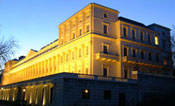
The Royal Society of London © Royal Society
Darwin was elected fellow of the Society on 24 January 1839. In 1853 he was awarded the Royal Medal for his exhaustive work on barnacles, and in 1864 he was awarded the prestigious Copley Medal for his outstanding researches in geology, zoology and botanical physiology.
Royal Zoological Society of London
Darwin became a fellow of the Royal Zoological Society of London in 1837. John Gould, who was then employed by the Zoological Society, described the birds Darwin had collected on the Beagle voyage. It was Gould who realised that the finches found on the Galapagos Islands belonged to a new group and that different species were confined to different islands.
In March 1838, Darwin saw his first ape in London Zoo, which had recently acquired an orang-utan named Jenny. Darwin observed a keeper teasing her with an apple and was fascinated by the similarity between the ape’s reaction and a child’s tantrum, later writing to his sister, that the ape ‘threw herself on her back, kicked & cried, precisely like a naughty child’.
Toolbox
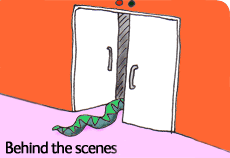
There are 27 km of specimen shelves in the Darwin Centre - the same distance as between the Museum and Junction 6 of the M1.
